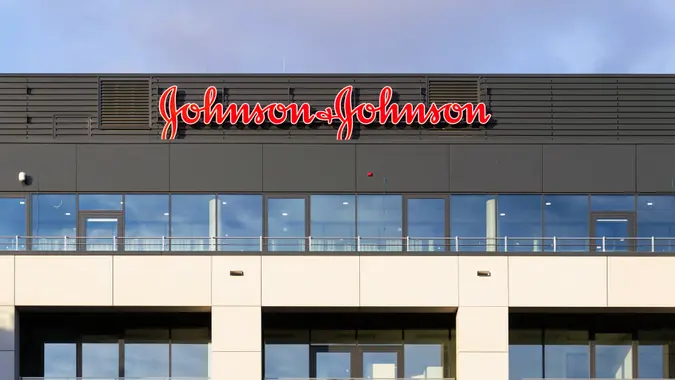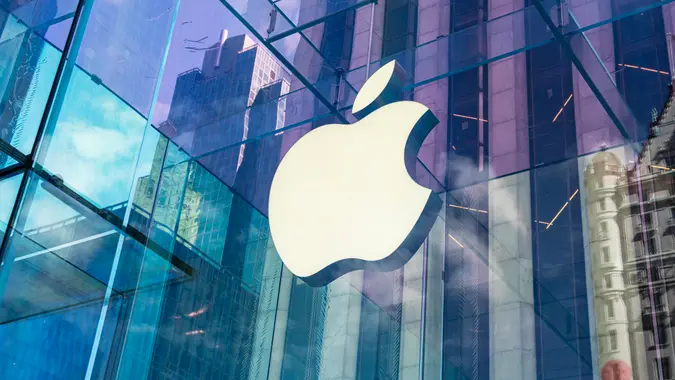If You Had Invested $100 in These 6 Megastores 10 Years Ago, Here’s How Much You’d Have Now

Commitment to Our Readers
GOBankingRates' editorial team is committed to bringing you unbiased reviews and information. We use data-driven methodologies to evaluate financial products and services - our reviews and ratings are not influenced by advertisers. You can read more about our editorial guidelines and our products and services review methodology.

20 Years
Helping You Live Richer

Reviewed
by Experts

Trusted by
Millions of Readers
Big-box retailers, also known as supercenters or megastores, are giant retail establishments with large physical footprints that resell products from other manufacturers. Most of the big-box stores are household names, such as Costco, Walmart, Target and Home Depot. While all of these companies have obviously been successful, how much of that success has passed through to investors who have owned their stock? The results have varied dramatically. Here’s a look at how much you’d have if you invested just $100 in six well-known big-box stores over the past 10 years.
Costco (COST)
- Stock price in 2015: $122.44
- Stock price in 2025: $1,007.71
- Gain (%): 723%
- Current value of $100 invested in 2015: $823
Costco is one of the most-beloved companies in the world. Thanks to a number of factors, from its reputation for having low costs, its “treasure hunt” shopping experience and the way it takes care of its employees, millions of consumers are happy to pay an annual fee simply to shop at its stores. Shareholders have been handsomely rewarded as well.
Walmart (WMT)
- Stock price in 2015: $21.64
- Stock price in 2025: $97.43
- Gain (%): 350%
- Current value of $100 invested in 2015: $450
Walmart is the largest retailer in the world and it’s the very epitome of the big-box retailer. Its huge size allows it to negotiate great deals on the products it sells, allowing it to live up to its previous tagline of “always low prices.” In recent years, it has made up ground in its online division, allowing it to become a better rival to online leader Amazon. This strategic change has helped prop up its share price.
Target (TGT)
- Stock price in 2015: $60.80
- Stock price in 2025: $96.93
- Gain (%): 59%
- Current value of $100 invested in 2015: $159
Target and Walmart both opened in 1962 and they have been heated rivals for more than six decades. They offer a slightly different shopping experience, as Target strives to create a more pleasant shopping experience and focuses on slightly more stylish and fashionable offerings while Walmart focuses on being the low-price leader. Target has had much more of a struggle the last 10 years than most of its competitors, however and it has not kept up with the overall market either.
Home Depot (HD)
- Stock price in 2015: $88.95
- Stock price in 2025: $364.86
- Gain (%): 310%
- Current value of $100 invested in 2015: $410
Home Depot is the leader in the home improvement retail space, at more than three times the size of its primary competitor, Lowe’s. The stock has been an absolute home run in terms of performance, both over the past decade and all the way back to its founding in 1978. Its importance to the economy is signified by its inclusion in the Dow Jones Industrial Average, much like its fellow retail leader Walmart.
Lowe’s (LOW)
- Stock price in 2015: $61.07
- Stock price in 2025: $224.48
- Gain (%): 268%
- Current value of $100 invested in 2015: $368
Lowe’s is the much-smaller competitor to Home Depot, but it’s still a $126 billion retail behemoth. Although it seems as if Lowe’s will always be trying to catch Home Depot in terms of profitability and market reach, that doesn’t mean it always plays second-fiddle in the stock market. It has posted similar gains to Home Depot over the past 10 years and there have been stretches in which the stock has outperformed.
Best Buy (BBY)
- Stock price in 2015: $25.95
- Stock price in 2025: $69.42
- Gain (%): 168%
- Current value of $100 invested in 2015: $268
Best Buy had a terrible run from 2006 to 2012, losing roughly 80% of its value and looking like it was headed for bankruptcy. But if you bought the stock in 2015, you got in at the right time. The company managed to survive the transition to online shopping and has been reborn, rewarding shareholders handsomely along the way.
Editor’s note: Stock data was sources from Yahoo! and is accurate as of May 8, 2025.
 Written by
Written by  Edited by
Edited by 

























